Lecture 4 --- Lecture 7 Q&A
Lecture 4 Higher-Order Functions
1
John提到设计函数时需要注意的几点
- Give each function exactly one job
- Don't repeat yourself (DRY). Implement a process just once, but execute it many times.
- Define functions generally.
- 确保每个函数只做一个事情。
- 避免重复代码(遵循DRY原则)。将一个过程实现一次,然后多次执行它。
- 定义通用的函数。
2
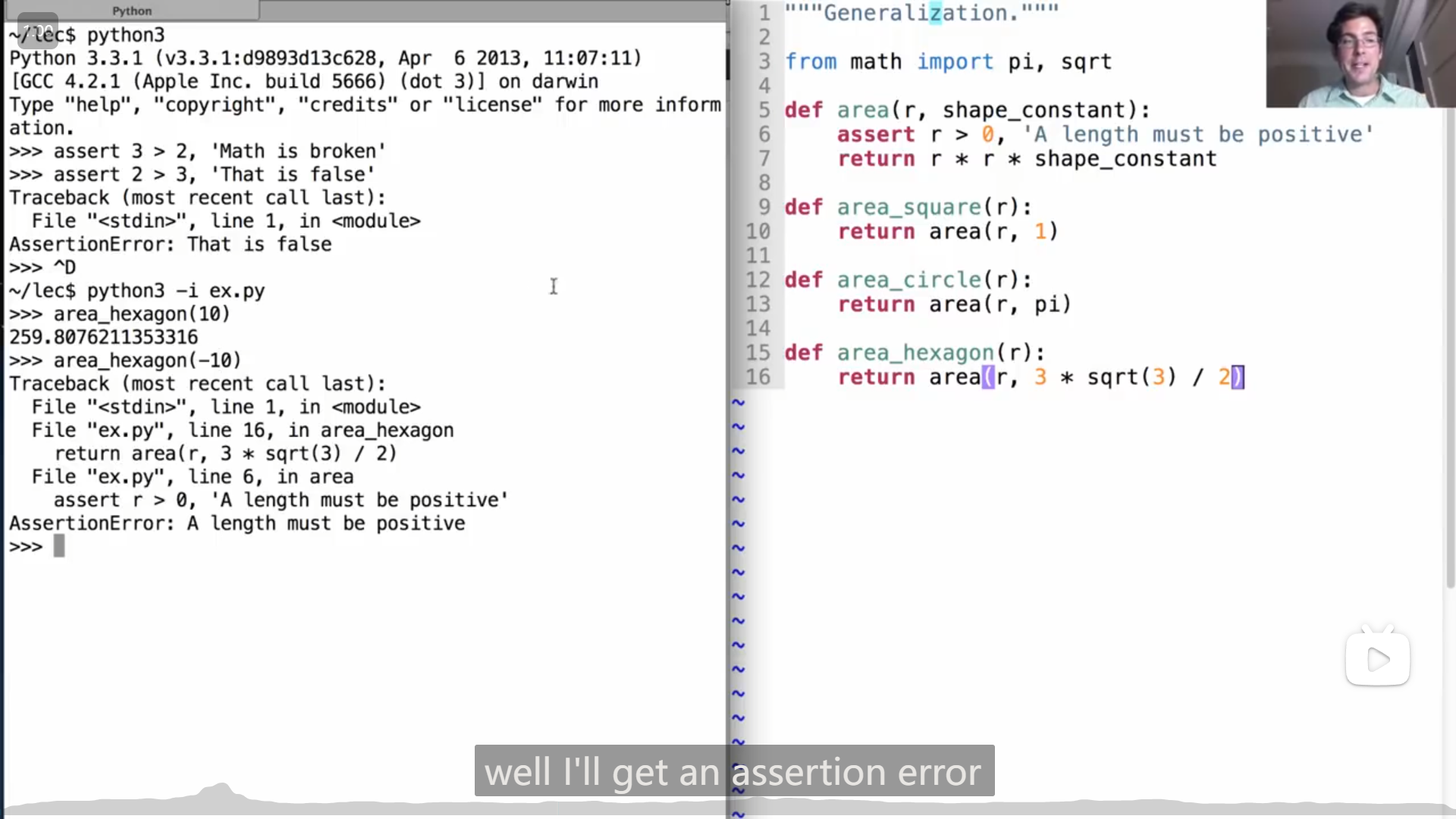
assert 语句,如果 assert 之后表达式的值为假,那么就会报错,并显示对应的信息,如上图
3
John演示 def 创建出来的函数有固有的名字,而 lambda 创建出来的函数没有
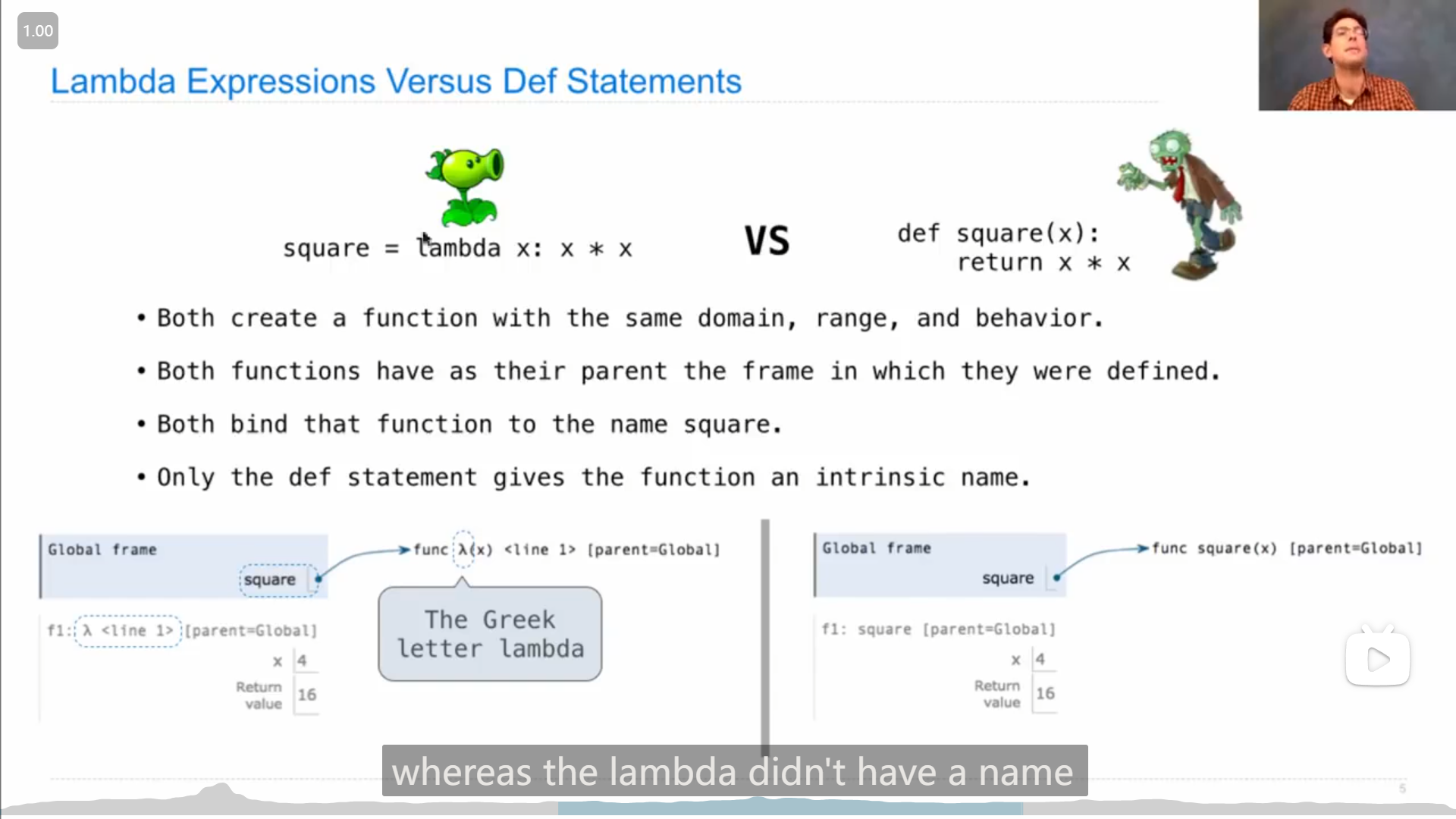
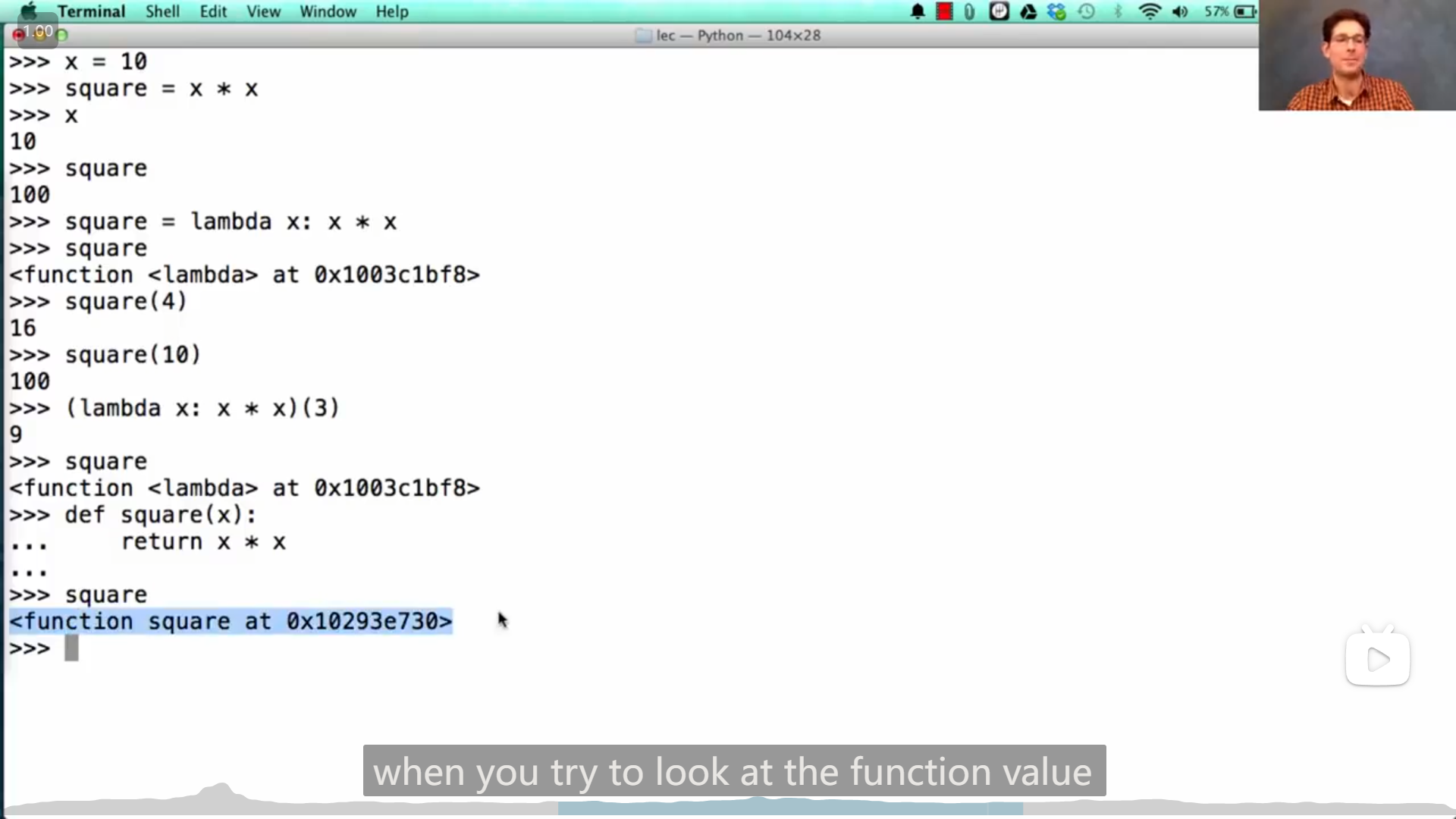
4
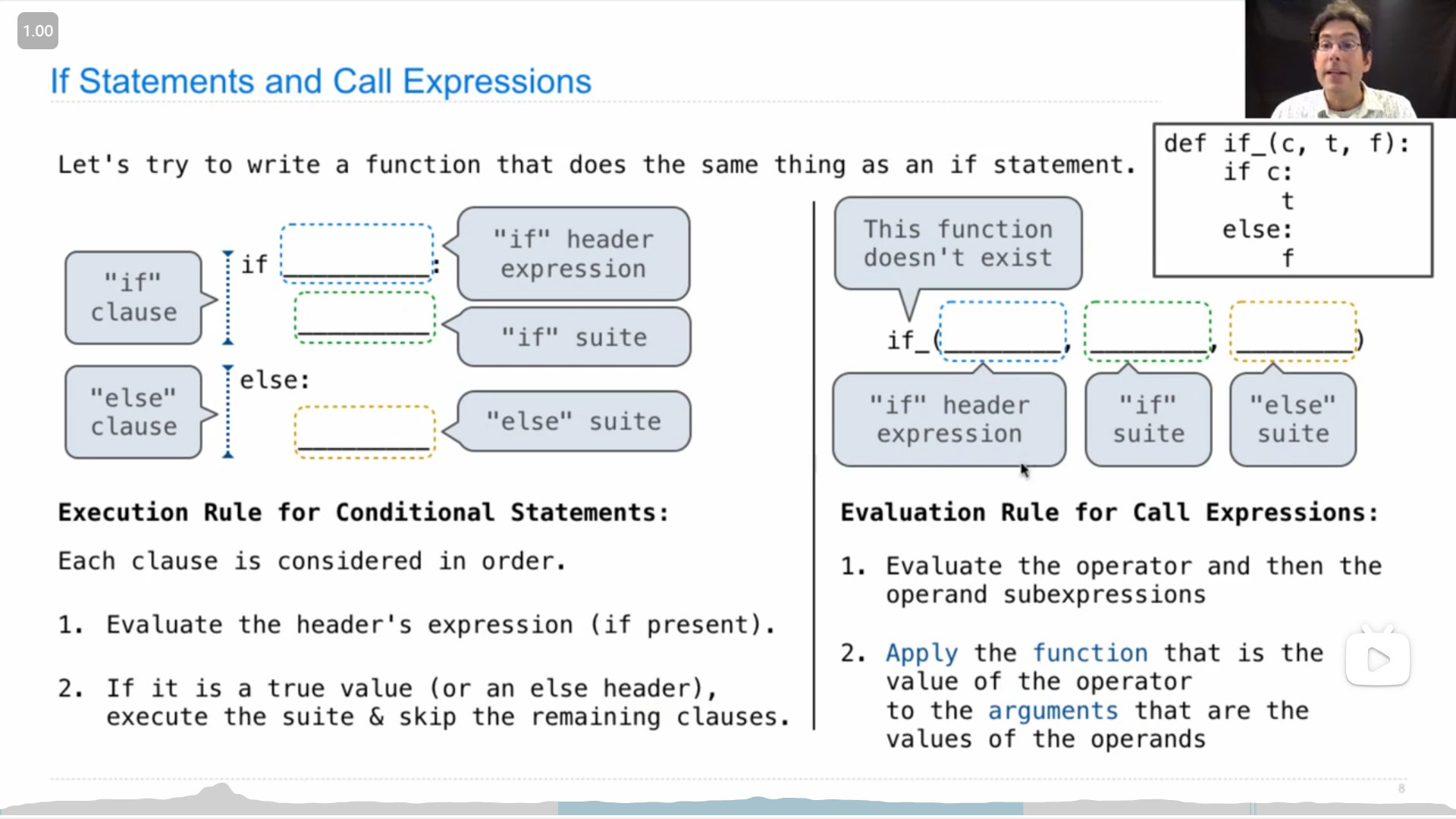
if 语句只会执行 if 或者 else 语句中的一个,而另一个不会被执行,
而如果像上图一样定义一个类似于 if 语句的函数,并把表达式放在参数中,那么两个表达式都会被执行,而传入的是表达式的结果/对应的值
5
and 和 or 语句,
and / or 语句中,如果靠前的表达式结果计算为假/真,那么就会返回这个结果,而靠后的表达式就不再会执行,而如果所有表达式全对应为真/假,那么就会返回最后表达式的结果
6
... if ... else ... 语句(感觉很像c语言中的三目运算符),
判断条件在中间,为真就执行左边的表达式并返回,为假就是右边
Project Hog
1
Problem 7,这题需要实现 announce_highest 函数,返回一个函数,
这题可以参考已经实现好的 annouce_lead_changes 函数,代码的结构和这个函数大致相同
代码
def announce_highest(who, last_score=0, running_high=0):
assert who == 0 or who == 1, 'The who argument should indicate a player.'
# BEGIN PROBLEM 7
"*** YOUR CODE HERE ***"
def say(score0, score1):
gain = (score0 if not who else score1) - last_score
if gain > running_high:
print(gain, "point(s)! The most yet for Player", who)
return announce_highest(who, last_score + gain, gain if gain > running_high else running_high)
return say
# END PROBLEM 72
Problem 8中提到,可以使用 *args 来传入和使用不定个数的参数
Instead of listing formal parameters for a function, you can write
*args. To call another function using exactly those arguments, you call it again with*args. For example,python>>> def printed(f): ... def print_and_return(*args): ... result = f(*args) ... print('Result:', result) ... return result ... return print_and_return >>> printed_pow = printed(pow) >>> printed_pow(2, 8) Result: 256 256 >>> printed_abs = printed(abs) >>> printed_abs(-10) Result: 10 10
代码
def make_averaged(original_function, trials_count=1000):
# BEGIN PROBLEM 8
"*** YOUR CODE HERE ***"
def averaged(*args):
i = 0
sum = 0
while i < trials_count:
sum += original_function(*args)
i += 1
return sum / trials_count
return averaged
# END PROBLEM 83
Problem 9中需要使用Problem 8中实现的 make_averaged 来 避免代码的重复
代码
def max_scoring_num_rolls(dice=six_sided, trials_count=1000):
# BEGIN PROBLEM 9
"*** YOUR CODE HERE ***"
best_nums_rolls = 0
max_average_score = 0
averaged_roll_dice = make_averaged(roll_dice, trials_count)
i = 1
while i <= 10:
average_score = averaged_roll_dice(i, dice)
if average_score > max_average_score:
max_average_score = average_score
best_nums_rolls = i
i += 1
return best_nums_rolls
# END PROBLEM 9Lecture 5 Environments
1
John提到框架 frame
- Every user-defined function has a parent frame (often global)
- The parent of a function is the frame in which it was defined
- Every local frame has a parent frame (often global)
- The parent of a frame is the parent of the function called
- 每个自定义函数都有一个母框架(通常是全局框架)
- 函数的父级就是它被定义时所处的框架
- 每个本地框架都有一个母框架(通常是全局框架)
- 框架的父级是被调用函数的父级
Lecture 6 Design
1
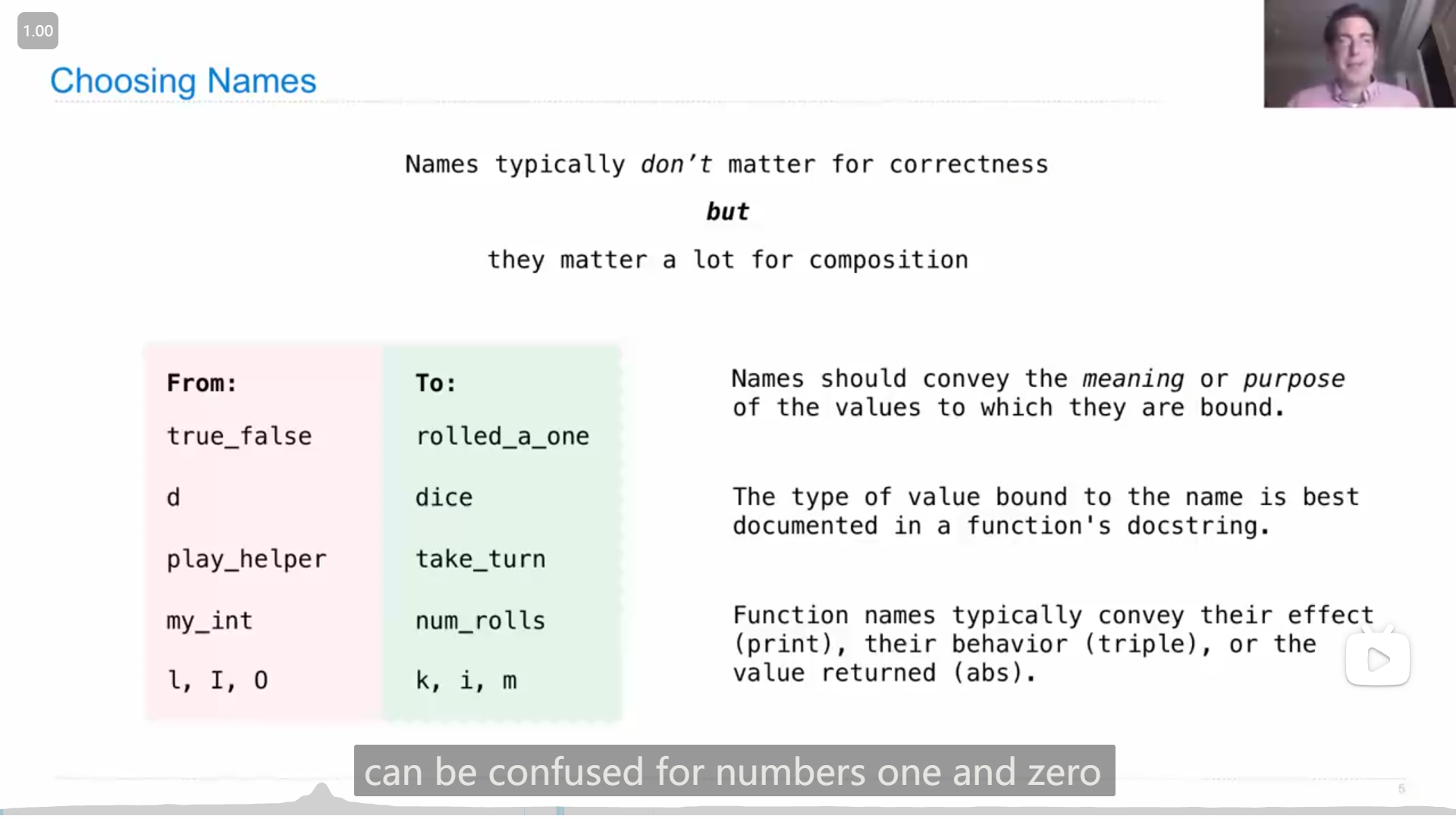
John提到如何对函数以及变量命名,分别举出了正反例
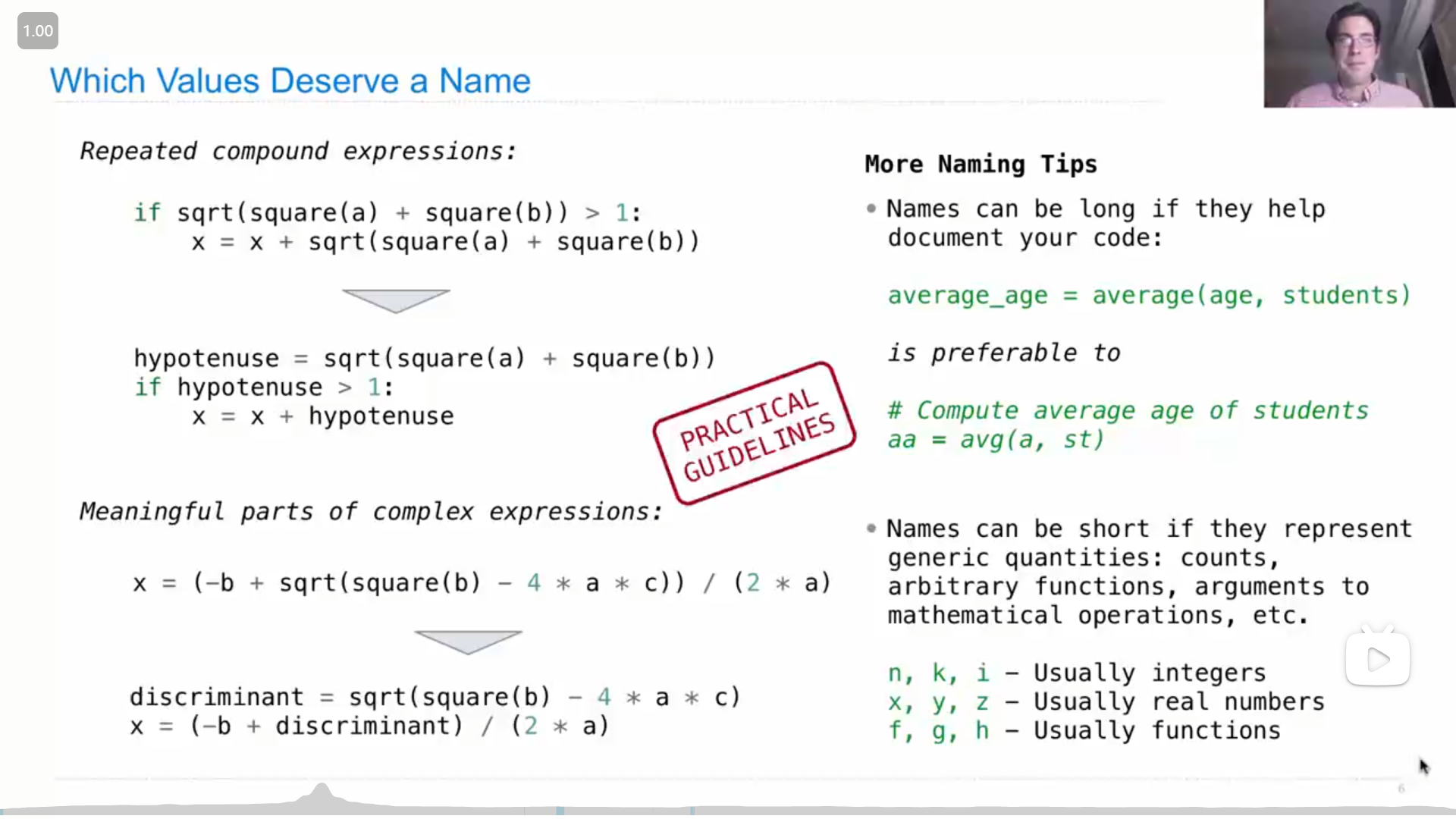
John指出了什么样的东西值得去命名,以及命名时(更多的)一些注意点
Lecture 6 Q&A
1
John在演示时使用了 round 这个函数,作用是能四舍五入取整/去掉剩余的位数,
第一个参数传入需要取整的数,第二个参数表示取到第几位小数,例如
>>> 1/3
0.3333333333333333
>>> round(1/3, 4)
0.3333
>>> 2/3
0.6666666666666666
>>> round(2/3, 5)
0.66667Lecture 7 Function Examples
1
函数修饰符 Function Decorator
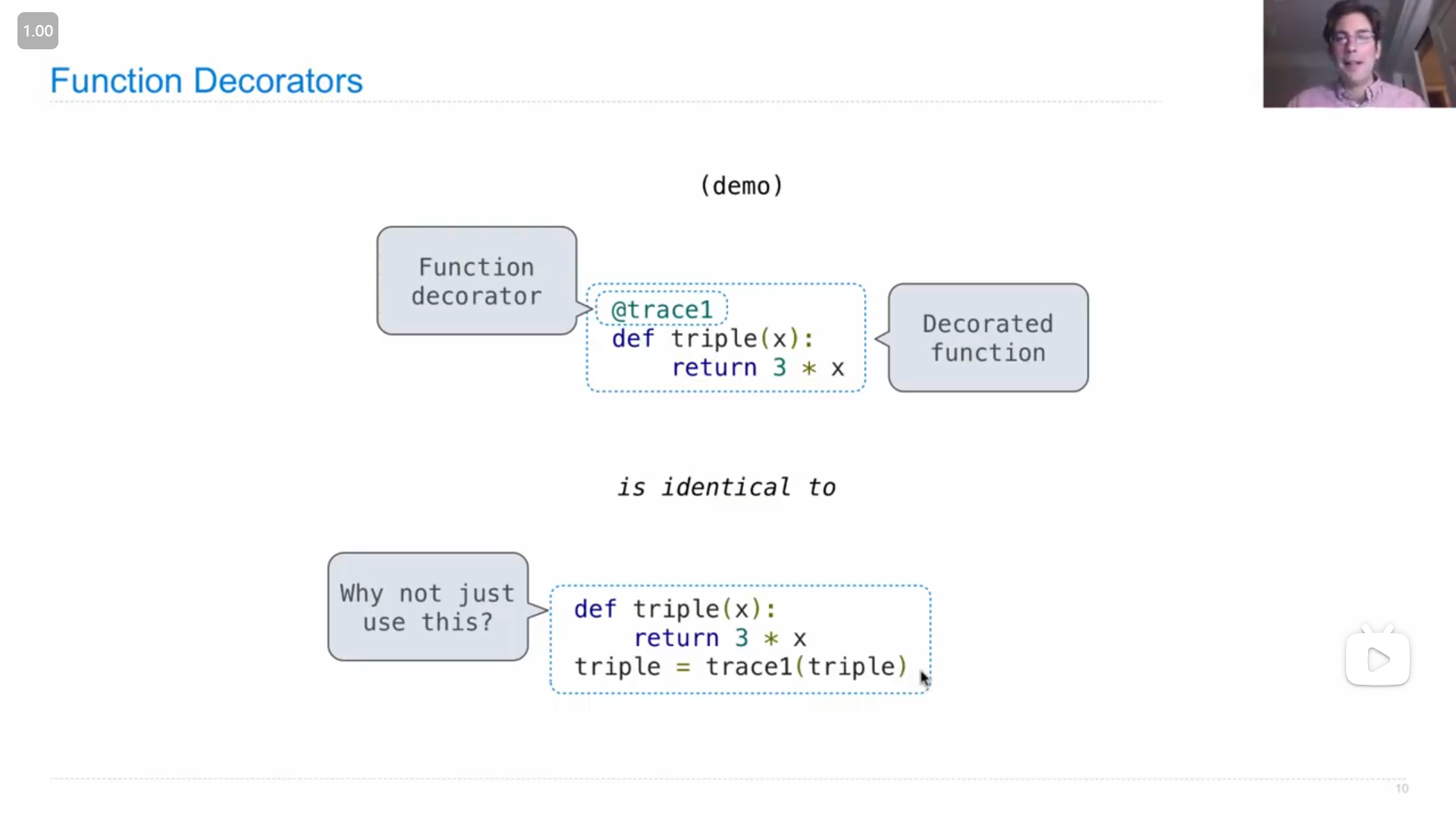
如果在某个函数定义时, @ 另一个已有的函数,就会把这个函数名对应的变量绑定成被 @ 的函数传入这个函数后的返回值,
例如下图中John的demo演示
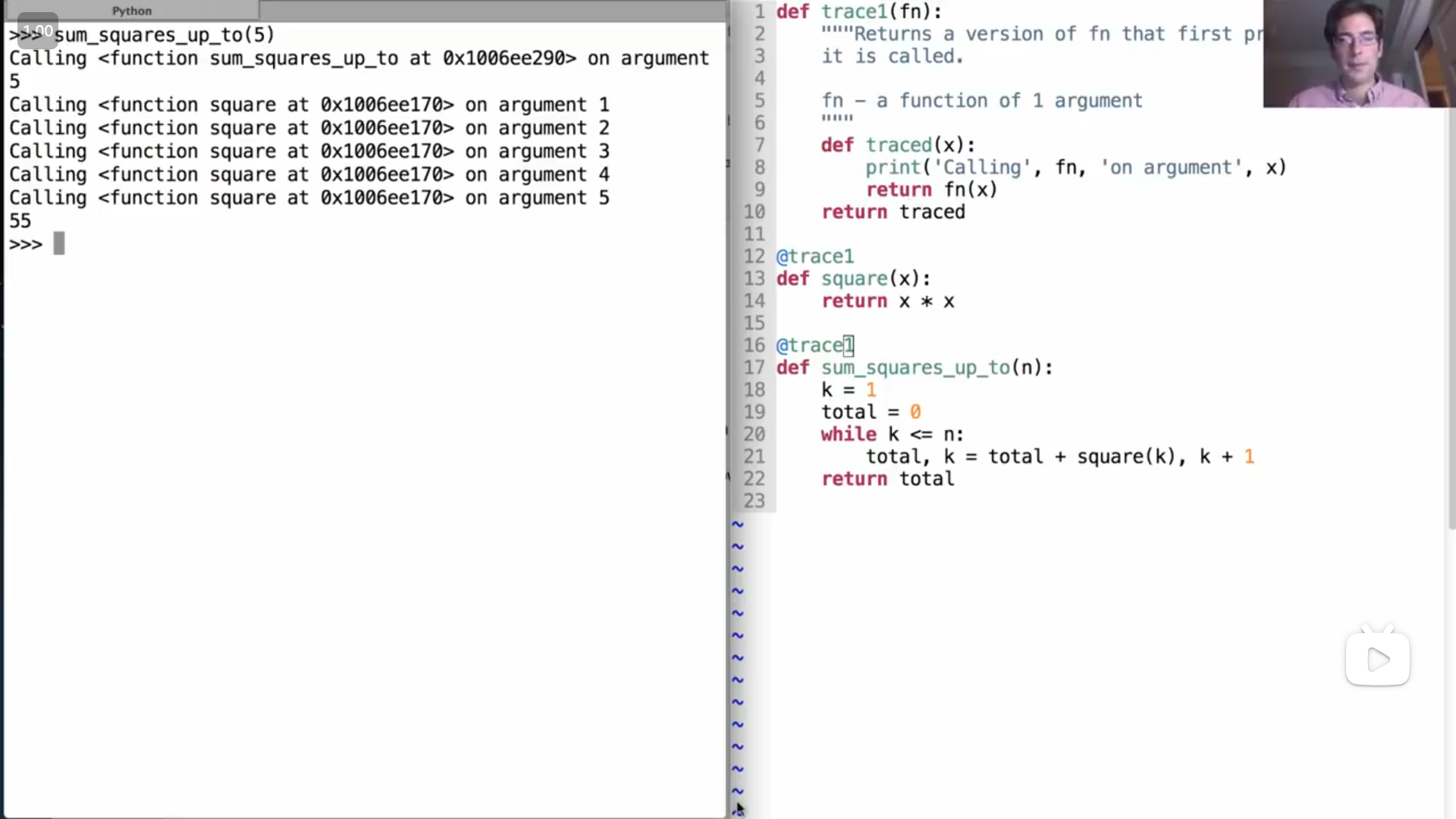
Lecture 7 Q&A
1
有人提问18秋季第一次期中考试的第6题的a题
引述
This Again?
Definitions. A repeatable integer function takes an integer argument and returns a repeatable integer function.
(a) (6 pt) Implement repeat , which is a repeatable integer function that detects repeated arguments. As a side effect of repeated calls, it prints each argument that has been used before in a sequence of repeated calls. Therefore, if an argument appears n times, it is printed n − 1 times in total, each time other than the first. The detector function is part of the implementation of repeat ; you must determine how it is used.
Important: You may not use a list, set, or any other data type not covered yet in the course.
def repeat(k):
"""When called repeatedly, print each repeated argument.
>>> f = repeat(1)(7)(7)(3)(4)(2)(5)(1)(6)(5)(1)
7
1
5
1
"""
return _____________________________________________________________________________(k)
def detector(f):
def g(i):
if ________________________________________________________________________________:
_______________________________________________________________________________
return ____________________________________________________________________________
return g尝试自己做了一下,
由于 detector 的参数是 f ,所以想到应该是通过这个函数 f 来记录 repeat 传入过的参数,
而每次调用 g 时,应该是返回一个新的 g (这样才能重复调用),所以 g 最后 return 时应该要调用 detector 来更新记录的信息,那么 g 中大概就可以得到
def g(i):
if f(i):
print(i)
return detector(...)而 repeat 中,应该是最初始的状态,所以应该给 detector 传入没有信息的函数 lambda x: False ,因此 g 中要给 detector 传入的函数就是需要添加当前的 i 就行了
代码
def repeat(k):
return detector(lambda x: False)(k)
def detector(f):
def g(i):
if f(i):
print(i)
return detector(lambda x: x == i or f(x))
return g